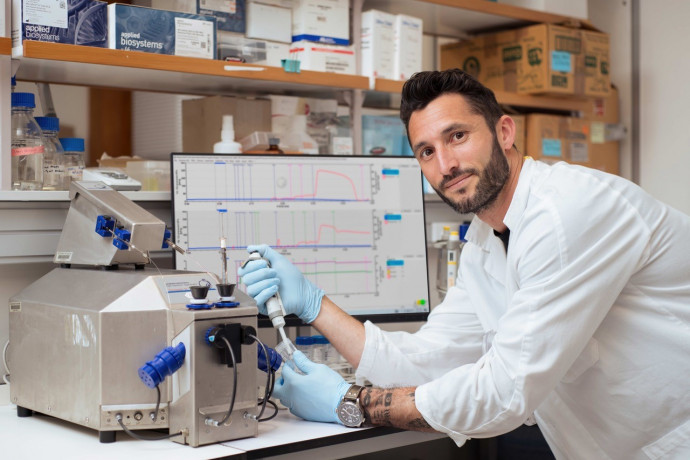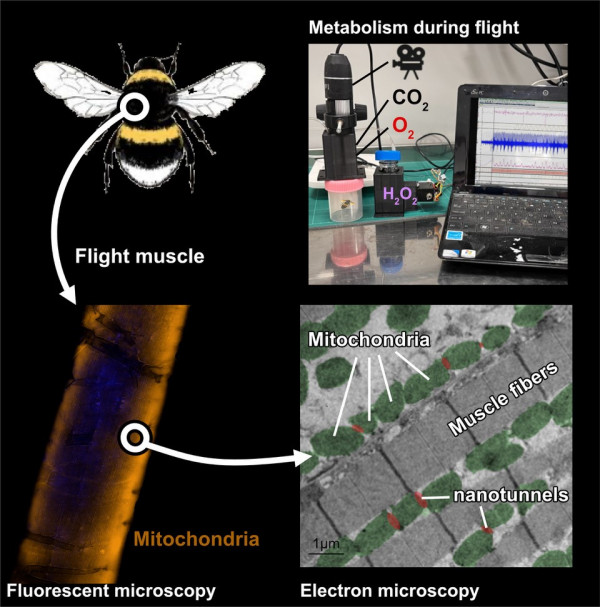Powering the flight of the bumblebee

Dr Jules Devaux of Waipapa Taumata Rau the University of Auckland will solve the paradox of how bumblebees power the rapid wing movement required for flight, despite lacking key enzymes to ensure energy supply and waste removal
Published on 2 Whiringa-ā-rangi November 2023
The bumblebee is the extreme athlete of the insect world, possessing some of the fastest-contracting muscles known to science. These flight muscles allow the bumblebee’s disproportionately small wings to flap over 200 times a second in order to achieve flight. However, insect flight muscles lack multiple key enzymes that are required in mammalian muscles to ensure constant energy supply and remove waste products. So how does the humble bumblebee take to the air?
Dr Devaux has been awarded a Marsden Fund Fast-Start grant to determine the biological mechanisms underlying the paradoxical flight of the bumblebee. Dr Devaux hypothesises that the powerhouses within bumblebee muscle cells, called mitochondria, play a critical role in their unique flight abilities. This study will determine if mitochondria within flight muscles are connected to each other through ‘nanotunnels’, promoting a constant energy flow during flight. Using super-resolution microscopy, Dr Devaux will investigate how the unique enzyme complexes within these mitochondria have been fine-tuned to accomplish superpowered flight. They will also investigate how bumblebee flight muscles defend themselves against the accumulation of toxic byproducts produced by their frantic activity.
This high-flying research programme will determine for the first time the molecular mechanisms permitting the paradoxical flight of the bumblebee.

Mitochondria within the flight muscles of a bumblebee, and an experimental set-up for measuring bumblebee metabolism during flight (image: supplied)
